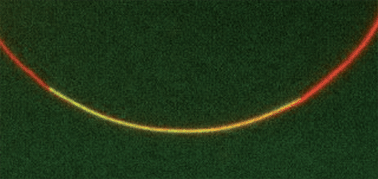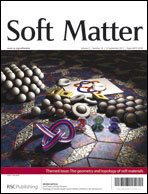Geometrical edgeactants control interfacial bending rigidity of colloidal membranes†
Abstract
A colloidal membrane is a one rod-length thick monolayer of aligned rods which spontaneously assembles in a mixture of rod-like viruses and non-adsorbing

- This article is part of the themed collection: The geometry and topology of soft materials

 Please wait while we load your content...
Please wait while we load your content...